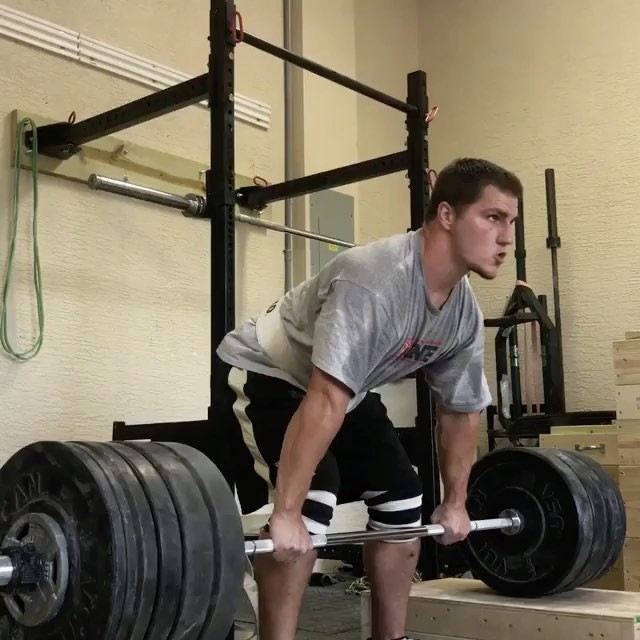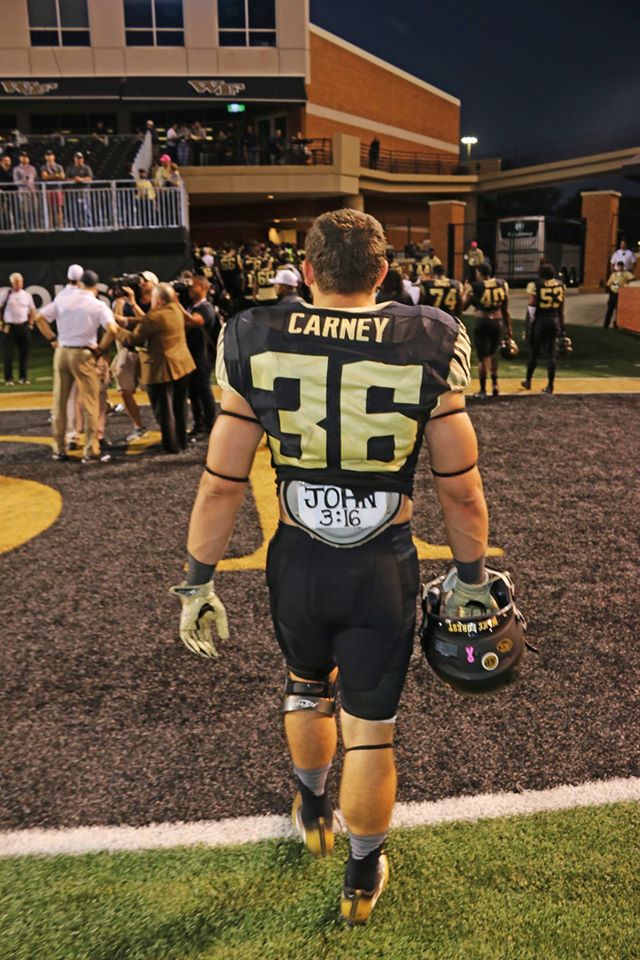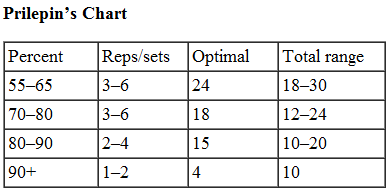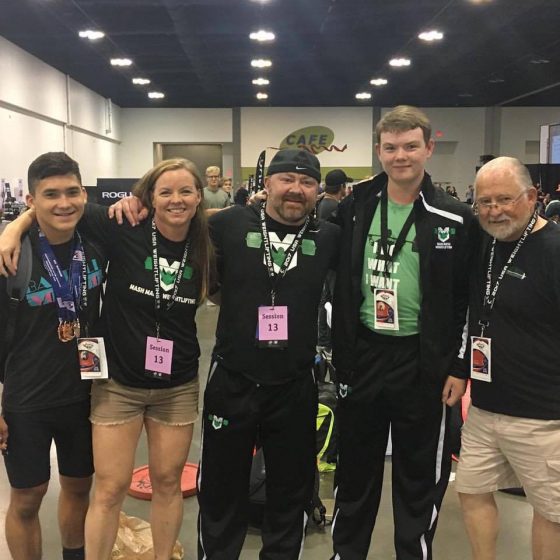Check out one of the Online Teams:
• Mash Mafia Bronze
• Mash Mafia Silver
• Mash Mafia Gold
• Eat What You Want
• Eat and Lift What You Want
Check them out here: ⇒ Mash Mafia Online Teams
===============================================
Variables of Programming
Programming is a complex beast. It’s a beast that drives me as a coach. I am in a constant search for the Holy Grail of Programming. The maddening thing is that I am almost certain that doesn’t exist. I have watched one program work wonders for an athlete, while stagnating another one. Whether you are coaching weightlifting, powerlifting, CrossFit, or strength and conditioning athletes (football, softball, MMA, etc.), there are variables that must be considered. Those variables are different depending on the sport. I am not going to pretend that I have it all figured out because no one does. If someone did, then there would be a coach that had athletes setting personal records at every meet. However to date I don’t know of one single coach that fits that description.
There are coaches that have more success than others. Those are the coaches that I gravitate towards. I try to learn from each and every one of them. My favorite part of coaching at the Pan American Games was getting to talk to the best coaches in America for hours at a time. Great coaches like Sean Waxman and John Broz are more than willing to share information. Then there are the younger coaches like Kevin Simons who is literally an exercise science bookworm. I love my chats with him as we both try to solve the mystery of Olympic weightlifting.

This series is going to be for all of you coaches and athletes trying to figure things out. I have been pretty dang successful in multiple sports. I am going to list a few of my accomplishments not to brag, but to let you know my resume. Here we go:
• I have been the Weightlifting Head Coach for Team USA three-times within the last year and a half.
• I’ve placed athletes on Team USA Weightlifting in the Youth, Junior, and Senior Divisions. (2 Youth, 5 Junior, and 3 Senior all in the last 18-months)
• I have coached one Senior Athlete in Canada to the Senior World Championships, and one in New Zealand to the Youth World Championships
• I had four athletes at the USAPL Nationals including one American Record setting Junior, and two USPA National Champions and two World Record Setters.
• I have coached over one hundred Division I Collegiate Athletes in multiple sports like football, wrestling, softball, baseball, swimming, basketball, volleyball, and soccer.
• I am currently working with an Olympic Hopeful Tae Kwon Do Champion
• Personally I played football at Appalachian State University, was a Nationally Ranked Weightlifter training at the Olympic Training Center in Colorado Springs, and a world champion/world record holder Powerlifter to name a few.
• I currently coach two teenage CrossFitters including one that’s been to the CrossFit Games, and one that missed the games by one spot. I am coaching Team CrossFit Invoke in preparation for the Games 2018.

I am excited to bring this series to all of you. I am going to do one for weightlifting, one for powerlifting, one for CrossFit, and one for strength and conditioning. Today we will start with Weightlifting, and then each week I will tackle another sport. My goal is to give all of you coaches and athletes some ideas that might help your own training programs. I at least want to teach all of you the different variables, so that you might take a more comprehensive approach. I want no stones left unturned.
Weightlifting Programming Variables
I am going to start with listing a few of the obvious variable, and then I will explain each:
• Total Volume
• Intensity/Load
• Frequency
Total volume is a great place to start. A great tool to use is Prilepin’s Chart. This chart will tell you the optimal reps and total volume for various percentages of maximums. Here’s a copy of the chart:

A great place to start with Volume is in the Optimal Range. You will find that most people will fall within three categories:
1. Optimal Volume
2. High Volume
3. Low Volume
I recommend keeping notes on each athlete. I like to make notes during each block of training. Some athletes crush it during the accumulation and hypertrophy phases, while others do better in the Strength and Competition Phases. My goal is to figure out how to elicit the optimal response in each block. When you find a program that elicits a good response throughout, then stick to that program or at least keep the same parameters.
Frequency and Intensity are also unique to the individual. Some athletes respond well with high frequency programs. That means they are performing competition and supporting exercises more often. You might have read my “Squat Every Day” E-Books. These books are great for people that respond well to high frequency. This type of training is great for perfecting the movements of the competition lifts. The strength gains from a program like this are more neurological in nature. Basically you are getting more efficient at the lifts because you are practicing them more often.
“Intensity” is often confused with “effort”. Intensity is actually referring to load or the weight on the bar. Some people love to go heavy every day like Nathan Damron, and high intensity works well for him. His body is designed to take the beating of load, but not really designed for high volume. High volume is better left for Jacky Bigger. If you drop the volume too much for Jacky, you will get a decrease in performance. She’s probably the most complex to program for, but definitely the challenge is paying off.
Here are some other variables that people don’t talk about as much:
• Daytime Job
• Stressors in life
• Relationships
• Age
• Training Age
• Gender
• Relationship of Competition lifts to Strength Work
Daytime Job- You have to know if your athlete is working a real jog. If so, you need to know what kind of job. Are they on their feet a lot? Are they lifting things in their work? Is their job keeping them up late and cutting in on their rest times? These are all variables that should play into your programming for them. You can’t just write a program, and then force it on your athlete. The program should fit the athlete, but many people try to force the athlete to fit the program.
Stressors in Life- Man this one is huge. What’s going on in the lives of your athletes? This is where a coach has to be more than just someone who coaches them at practice. You have to know your athletes, and you need to care enough about them to get to know about their lives. I coach because I love helping people. Yeah I love when they win Gold Medals, but I love helping them navigate life. I want them to have more success than I ever did without all the mistakes.
If your athlete is dealing with stress, it’s going to affect them. Money, relationships, work, and more can crush an athlete’s energy levels. Stress can have literal physical effects on the body like tightness, weakness, low energy, and recovery issues. When your athlete is going through challenges in their life, I suggest pulling back on the volume and intensity. Let them get through the bump, and then you can crank the volume back up.
Age- We already discussed that all athletes are different. Some will perform better with Optimal loads, some with higher volume, and some with lower volume. That might not change as they get older, but there will need to be adjustments. Whatever workload an athlete has established, it will need to change, as the athlete gets older. Every athlete is different, but in my experience volume and intensity needs to be dialed back a bit for men over 26-years-old and women over 30-years-old. That doesn’t mean that their gains will stop. It just means that you will want to be a little wiser in the approach.
There are the outliers like Colin Burns. He’s 34-years-old, and probably outworks every weightlifter in the country. Once again you simply have to know your athlete. Colin is a very unique athlete.
Training Age- This is one that most people ignore. You might be coaching a 21-year-old, but if he’s been training for ten years, you are going to have to be careful not to over work him. I coach Nathan Damron that is 21-years-old, and he’s trained over ten years. He’s going through a bit of a tough time, so we have to look at changing things up a bit. Nathan could continue to improve for the next ten years, but we might make adjustments to his volume a bit to get him to the next level.
Gender- The biggest difference is that most women need higher volume than men. This is just a safe place to start. Let’s look at three of our top girls. Jacky Bigger needs high volume the entire program. December Garcia needs high volume during the hypertrophy phases and moderate volume thereafter. You can’t drop it too low or have it too high for her to peak properly. Hunter Elam is like a darn man. She needs moderate to start shifting to low volume and high intensity and the end to peak.
Relationship of Competition lifts to Strength Work- This is the most unique one to the lifter. Some like to peak the strength work right along with the competition lifts, and others need phases that are separate in nature. For Jacky Bigger I have figured out that her squat should be peaked early on, and then maintained throughout. There isn’t volume high enough on strength movements like squats, pulls, and presses to negatively affect her. However when the volume is increased on the competition lifts, that volume affects her more negatively. The competition lifts are way more abusive on the joints, which can be harder to recover from.
I recommend taking notes on each stage of your programming. The relationship between strength work and the competition lifts is a major key to a successful program. Each program is a chance to get closer to the perfect individual program. Once you’ve locked in on a program that works best for an athlete, I suggest sticking with that format. You don’t ever want to repeat a program exactly, but repeat the basic traits of a successful program as long as that program works.
I hope this article helps you. I wish that I had read an article like this one five years ago, but hey I like being the guinea pig for all of you. My athletes put their trust in me. It’s my responsibility to design them the best possible program. The key is closely observing and making notes on each and every athlete, so that you can pinpoint the pros and cons.
================================================
Check out one of our Eleven E-Books:
• “Squat Every Day” (High Frequency Squat Programming)
• “Eat What You Want” (Nutrition, Macros, and a built-in Macro Calculator
• “Squat Every Day 2” (Part 2 of High Frequency Squat Programming)
• “No Weaknesses” (Defeat Muscular Imbalances crush the Recovery Game)
• “Mash Program Sampler” (Athletic Performance, Oly, Powerlifting, and Functional Programming)
• “Mash Program Sampler 2 (8 More 12-week Programs)
• “The Mash Blueprint for Program Design” (Learn all about Programming)
• “Performance Zone” (Defeat all Mental Roadblocks)
• “Train Stupid”(Programming and Philosophy of Nathan Damron)
• “MashJacked” (Hypertrophy for Performance and Aesthetics)
• “Conjugate: Westside Inspired Weightlifting”
Check them out here: ⇒ Mash Elite E-Books
